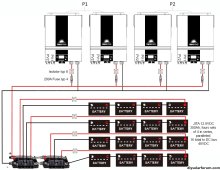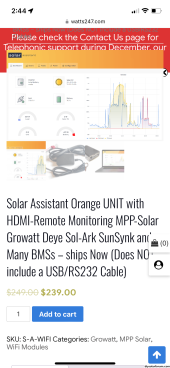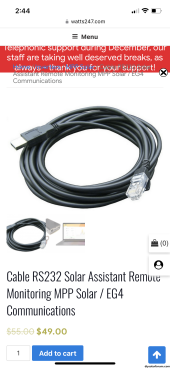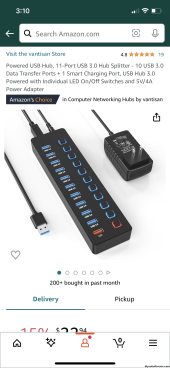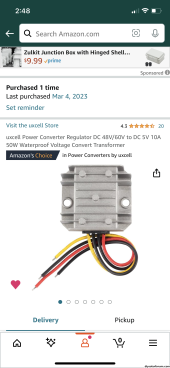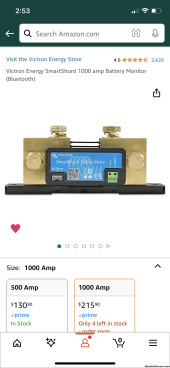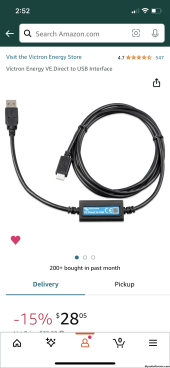garetwo
New Member
We have:
Four SunGold Power SP6548 inverters
Sixteen LifePO4 300 ah batteries 4S4P
We intend to install these on each bank of four batteries between the bank and the bus:
Four Renogy 500A Battery Monitor with Shunt
Four HA02 battery equalizers
My question, please, what is a good way to remotely monitor these four Renogy monitors and the inverters, AND maintain a data log on each one? I do ask you to bear in mind, I am an electrician, communication protocol languages, etc., may need to be dumbed down.
Thanks!
Four SunGold Power SP6548 inverters
Sixteen LifePO4 300 ah batteries 4S4P
We intend to install these on each bank of four batteries between the bank and the bus:
Four Renogy 500A Battery Monitor with Shunt
Four HA02 battery equalizers
My question, please, what is a good way to remotely monitor these four Renogy monitors and the inverters, AND maintain a data log on each one? I do ask you to bear in mind, I am an electrician, communication protocol languages, etc., may need to be dumbed down.
Thanks!



